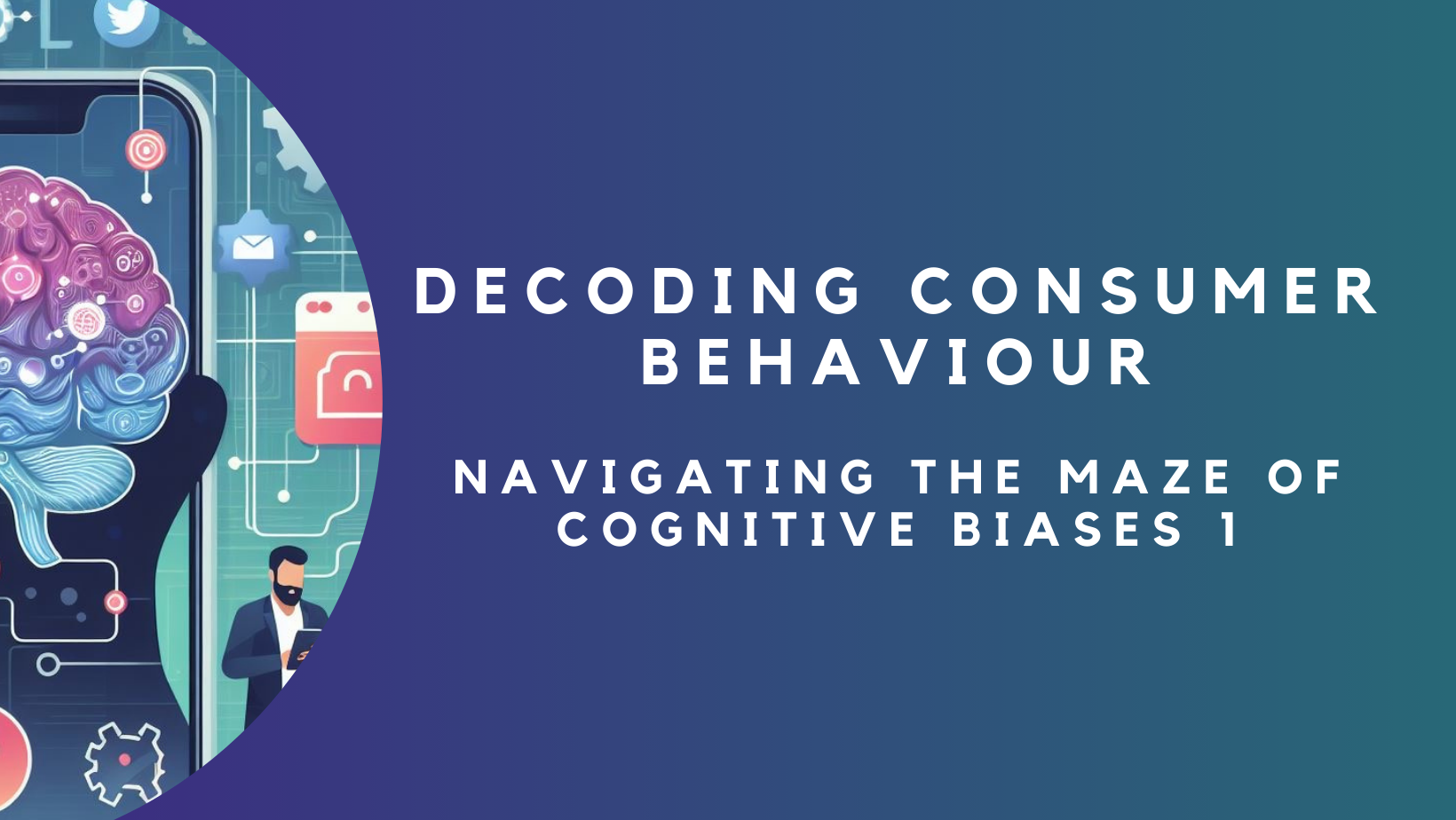Decoding Consumer Behaviour: Navigating the Maze of Cognitive Biases - PART I
 Ojo Emmanuel Oluwasanmi
Ojo Emmanuel Oluwasanmi
TL;DR
Biases are mental shortcuts created by our brains to make information retrieval and decision-making easier. This can either have positive or negative effects.
Social, cultural, and emotional influences as well as too much or limited information are all factors that contribute to cognitive bias.
Understanding biases and their ethical use can help product managers and user experience researchers build amazing product experiences for their consumers.
Overview
All day, every day, we make choices. We choose what to eat, how to respond to situations, what to buy, the price point at which we make purchases, how we interact with products around us etc. Every time we make those choices, we believe it's based on logic and careful weighing of all facts. Many of our choices, however, are based on brain programming that’s taken months, years, or even decades to grow and fester. We are all biased!
As product managers tasked with building user experiences and solutions for consumers, we need to study and understand some of the brain programming that defines consumer behaviour and how to leverage them ethically.
In this series, we will discuss this brain programming, what causes it and how we can leverage it to build better user experiences.
Cognitive Bias: The Brain Programming We All need Have.
In human psychology, Cognitive Bias, first introduced in 1972 by Amos Tversky and Daniel Kahneman, has been said to arise from problems related to memory, attention or other mental mistakes that cause unconscious errors in decisions and choices. It is important to note that this can either be negative or positive.
Let’s take a deeper look at this. The brain processes millions of information at a time. This information is based on inputs about a particular situation, social influence, emotions etc. Like most systems on autopilot, the brain has found a way to index (store) certain information in certain ways such that information retrieval is quick and takes less bandwidth for the brain. This is why we recall faces and information, (the past in general).
When the brain takes on some of this information, processes it, and stores it, it turns them into mental shortcuts (heuristics) which the brain uses to filter current reasoning/thought process when a consumer faces a decision/choice. This is often unconscious and generally leads to people making decisions based on preset biases while thinking they made a deduction based on plain logic. It is important to note that these biases do not form by themselves. Let us look at some factors that contribute to the formation of these biases.
Factors Contributing To Cognitive Bias
Many factors can contribute to the formation of cognitive biases. For this article, we will only look at 4 of them.
Social and Cultural Influences - Humans are social beings and our approach to life is often shaped by beliefs and attitudes from cultural and societal experiences. Conforming (consciously or otherwise) to these social norms and adopting cultural perspectives can introduce bias.
Emotional Influences - Humans are also emotional beings and can exhibit a range of emotions. These different emotional states impact how we see, hear and reason. Furthermore, Issues relating to family and friends tend to bring out a different perspective or response than with strangers.
Complex Information Processing - When solving complex problems, the brain is bombarded with too much information. There is, however, a limit to how much information our minds can process before making decisions. Because of this, our brain often creates mental shortcuts based on subsets of information provided. This can lead to simplified judgements and decisions which introduces bias.
Limited Information - When faced with making choices based on limited information, the brain also creates a shortcut to manage the choices. This also leads to biased decisions.
Why Learn About Cognitive Biases?
Cognitive bias drives consumer behaviour in more ways than we give it credit for. To build awesome consumer experiences, we must learn to identify some of these biases (at least the major ones) and turn them to our advantage. Furthermore, it is also important to understand these biases so we as professionals can consciously avoid them and become more effective and efficient in the workplace and life work (for instance, it can help us beat imposter syndrome - a common bias).
Final words...
In the next instalment of this series, we will discuss the major classifications of cognitive biases and dwell on one or two of them.
Till next time, I’ll leave you with this adaptation from Dr Gregory House;
“every consumer brain LIES!”
Subscribe to my newsletter
Read articles from Ojo Emmanuel Oluwasanmi directly inside your inbox. Subscribe to the newsletter, and don't miss out.
Written by

Ojo Emmanuel Oluwasanmi
Ojo Emmanuel Oluwasanmi
An experienced product manager making the world better one user experience per time.